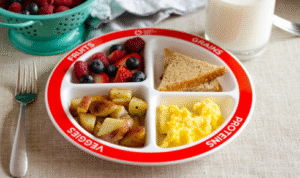
In recent years, discussions around Weight Loss Supplements have grown in popularity as people search for quick and effective ways to manage their weight. While supplements can sometimes play a role in adult weight management, their use for children is far more complex and often discouraged unless prescribed by a medical professional. Instead, for growing children, the focus should be on long-term healthy habits—most importantly, providing a balanced plate for kids at every meal.
Understanding Weight Loss Supplements
Weight loss supplements come in many forms, including pills, powders, teas, and shakes. They may contain ingredients like caffeine, fiber, herbal extracts, or appetite suppressants designed to boost metabolism or reduce hunger. For adults, some of these products can offer modest benefits when paired with healthy diet and exercise routines.
However, when it comes to children, the use of weight loss supplements is generally not recommended without medical supervision. Children’s bodies are still developing, and they require adequate nutrients for growth, brain function, and hormonal balance. Supplements designed for adults may contain high doses of stimulants or untested herbal ingredients that could be harmful to younger users.
Potential Risks of Supplements in Kids
-
Nutrient deficiencies due to appetite suppression
-
Negative side effects like headaches, nausea, or anxiety
-
Impact on hormonal development
-
Risk of dependency on artificial aids rather than lifestyle changes
Because of these concerns, most pediatricians encourage parents to focus on healthy eating patterns, physical activity, and behavior modification rather than supplement use.
The Balanced Plate for Kids – A Healthy Approach
A more sustainable and safe approach to managing a child’s weight is through balanced nutrition. A balanced plate provides all the essential nutrients needed for energy, growth, and development while helping to prevent overeating.
Here’s what a Balanced Plate for Kids should include:
1. Fruits and Vegetables
Half of the plate should be made up of colorful fruits and vegetables. These are rich in vitamins, minerals, antioxidants, and fiber. Fiber aids digestion and helps children feel fuller for longer, reducing the urge to snack on unhealthy foods.
2. Whole Grains
About one-quarter of the plate should include whole grains such as brown rice, whole wheat bread, quinoa, or oats. Whole grains provide complex carbohydrates for energy and are higher in nutrients compared to refined grains.
3. Lean Protein
The remaining quarter of the plate should contain lean protein sources like chicken, fish, eggs, beans, tofu, or lentils. Protein is essential for building muscles, repairing tissues, and supporting immune function.
4. Healthy Fats
While fats are often misunderstood, healthy fats from sources like nuts, seeds, avocados, and olive oil are important for brain development and hormone production.
5. Dairy or Alternatives
A serving of milk, yogurt, or a fortified plant-based alternative ensures children receive adequate calcium and vitamin D for strong bones and teeth.
Encouraging Healthy Habits
To make balanced eating a regular part of life, parents can:
-
Involve children in meal planning and cooking
-
Offer healthy snacks like fruit, yogurt, or whole-grain crackers
-
Limit sugary drinks and encourage water consumption
-
Provide consistent meal times to avoid overeating
-
Lead by example by following healthy eating patterns themselves
Why a Balanced Plate is Better than Supplements
While weight loss supplements may seem like a fast fix, they do not address the root causes of unhealthy weight gain in children. A balanced plate, on the other hand, teaches lifelong healthy eating habits, ensures adequate nutrition, and supports physical and mental development. This approach is safe, sustainable, and encourages children to develop a positive relationship with food.
Final Thoughts
Weight loss in children should never focus solely on quick fixes or drastic measures. Instead, it should be about creating a healthy lifestyle through balanced meals, physical activity, and emotional support. For kids, the best “supplement” is a nutrient-rich plate that fuels growth and promotes well-being—without the risks associated with unnecessary dietary aids.
